Many of our actions or inactions are based on unresolved conflicts.
Our whole life is permeated with conflicts, every day. It would seem that we should get used to them for a long time and, having realized this, take appropriate actions, but no, we usually prefer to leave everything in a suspended, unresolved state.
Such is the nature of man - conflicts seem completely insoluble, and when often a subconscious fear of failure, which almost everyone has, is added to them, the conflict turns into a real disaster.
Eliyahu Goldrat, the creator of the Theory of Constraints, said that conflicts do not exist in reality and the world lives in harmony. It's just that no one is trying to figure out the reasons for the conflict situation.
Goldratt proposed an interesting conflict resolution mechanism, often referred to as the "Thundercloud". The essence of his proposal is that if we apply a systematic approach and analyze the causes of the conflict, then it will be possible to propose a solution that will completely eliminate the conflict. And it won't be a compromise.
Many Theory of Constraints practitioners claim that Thundercloud works.
Let's test and try to apply Goldratt's algorithm to a few common IT conflicts. Let's see how this can help us.
Conflict: The contractor does not start development until the full TOR is completed
Many IT employees either worked as freelancers themselves, or ordered work from someone. This is really scary - you start work, it will stretch and, as a result, you will be in negative territory. You won't get the money, and besides, you will have to. You will either have to finish the project for an infinite amount of time, or quit. Nobody wants that.
Exactly the same fear arises among account managers with orders of millions. A freelancer can and will tolerate a certain amount of time without money, but the contractor company will have to pay salaries to employees from their own funds all this time, which can sometimes be very ruinous.
, , N . .. , , , .
? , , . , ( ). , , .
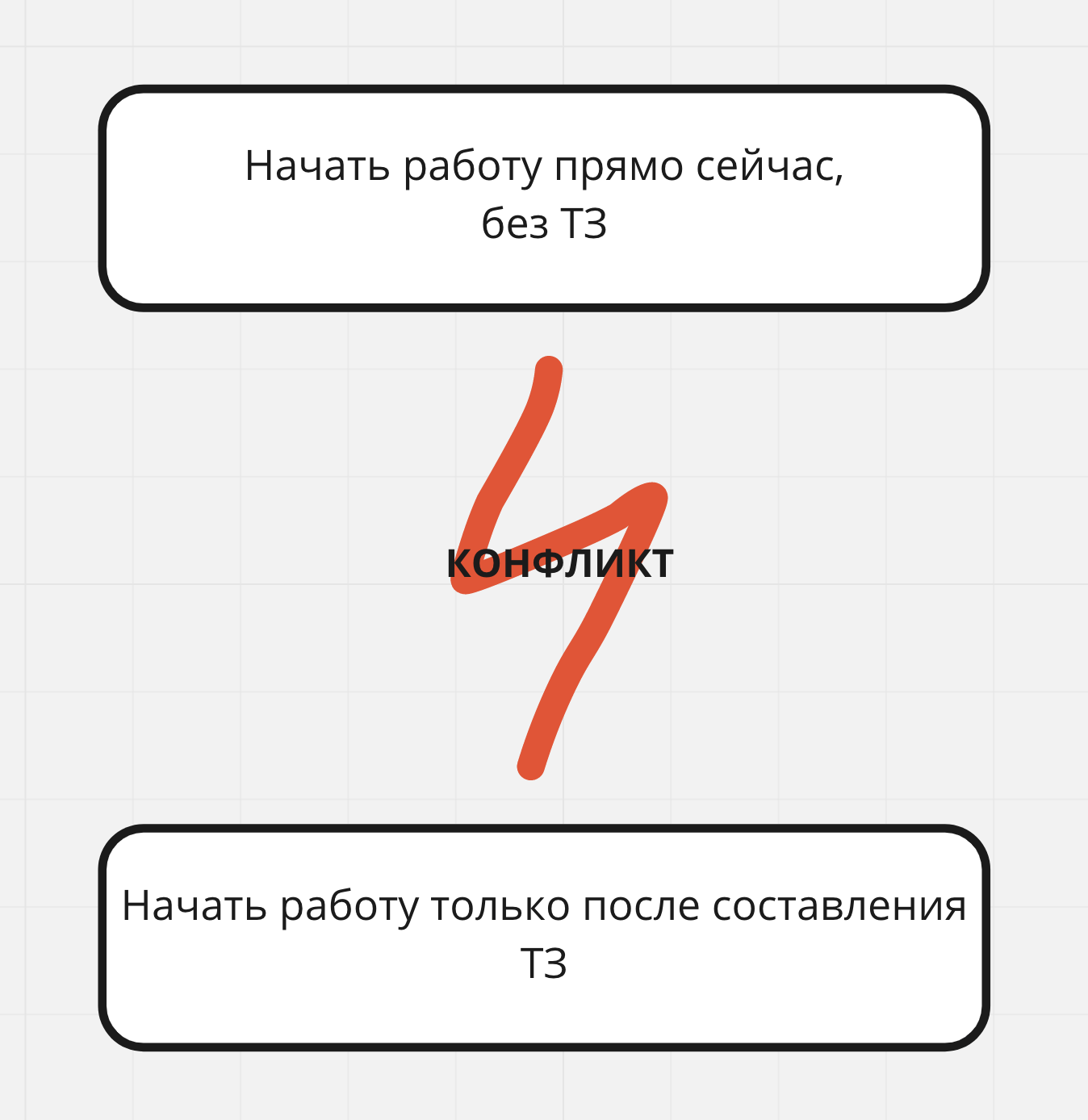
?
, , « » .
.. « » « ».
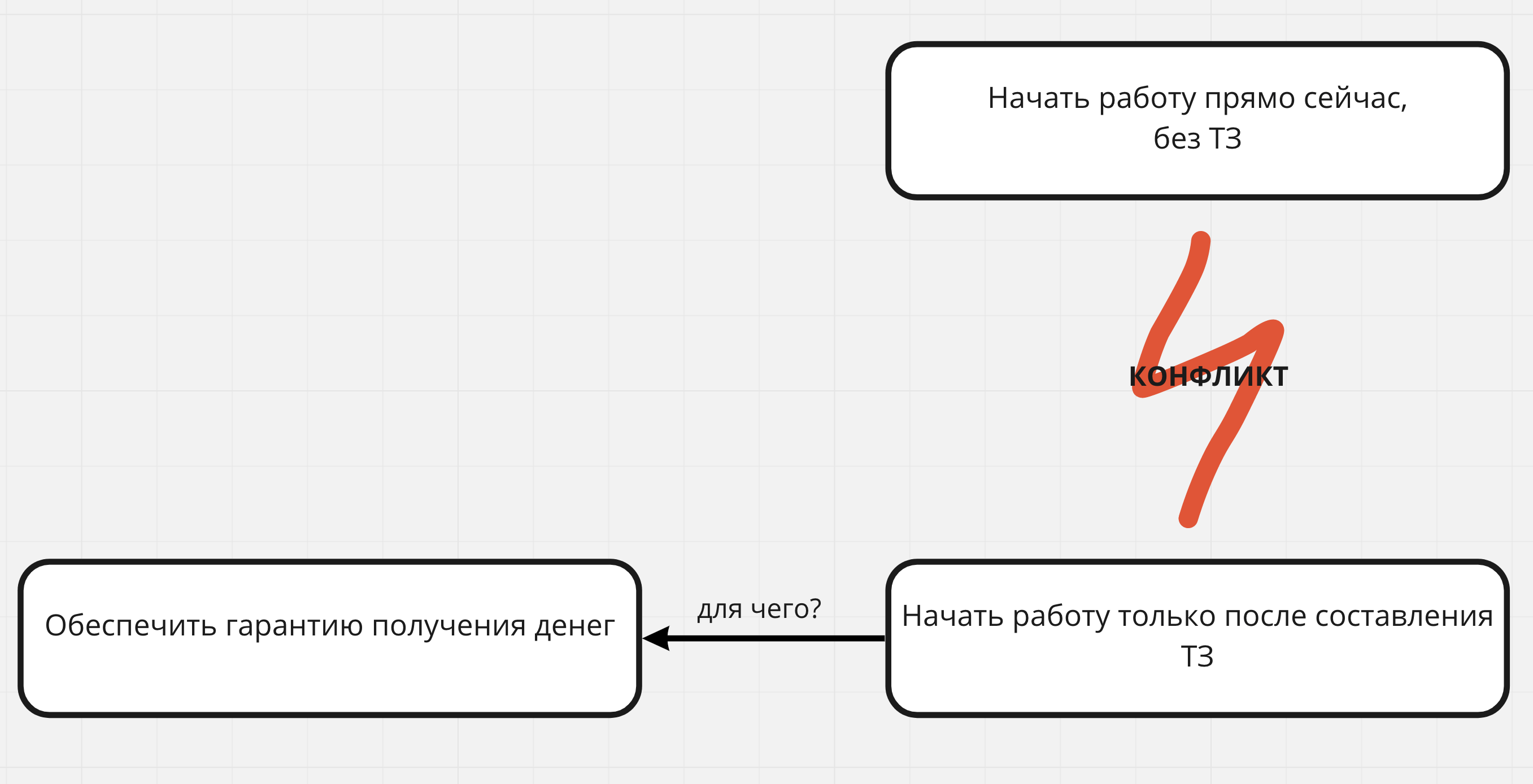
. , , ? ?
, . , .
.. « , » « ».

, . .. – « »
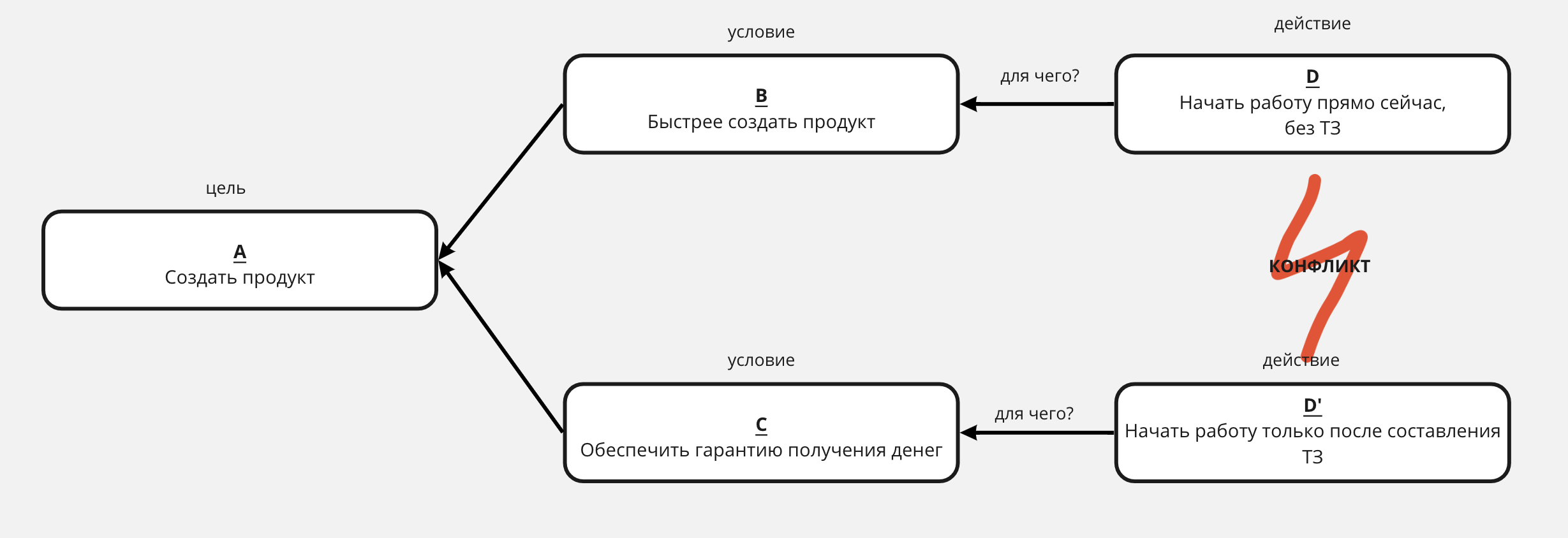
: A, B, C, D, D’.
, . « ».
. C D, B D’. , , .
, . (), D D’ B C.
, «» . . , .
: « ». : « ».
: « ». : « »
B-D ( ?):
– .
, , , ..
,
. ,
C-D’ (, ):
, , .
, . .
- .
,
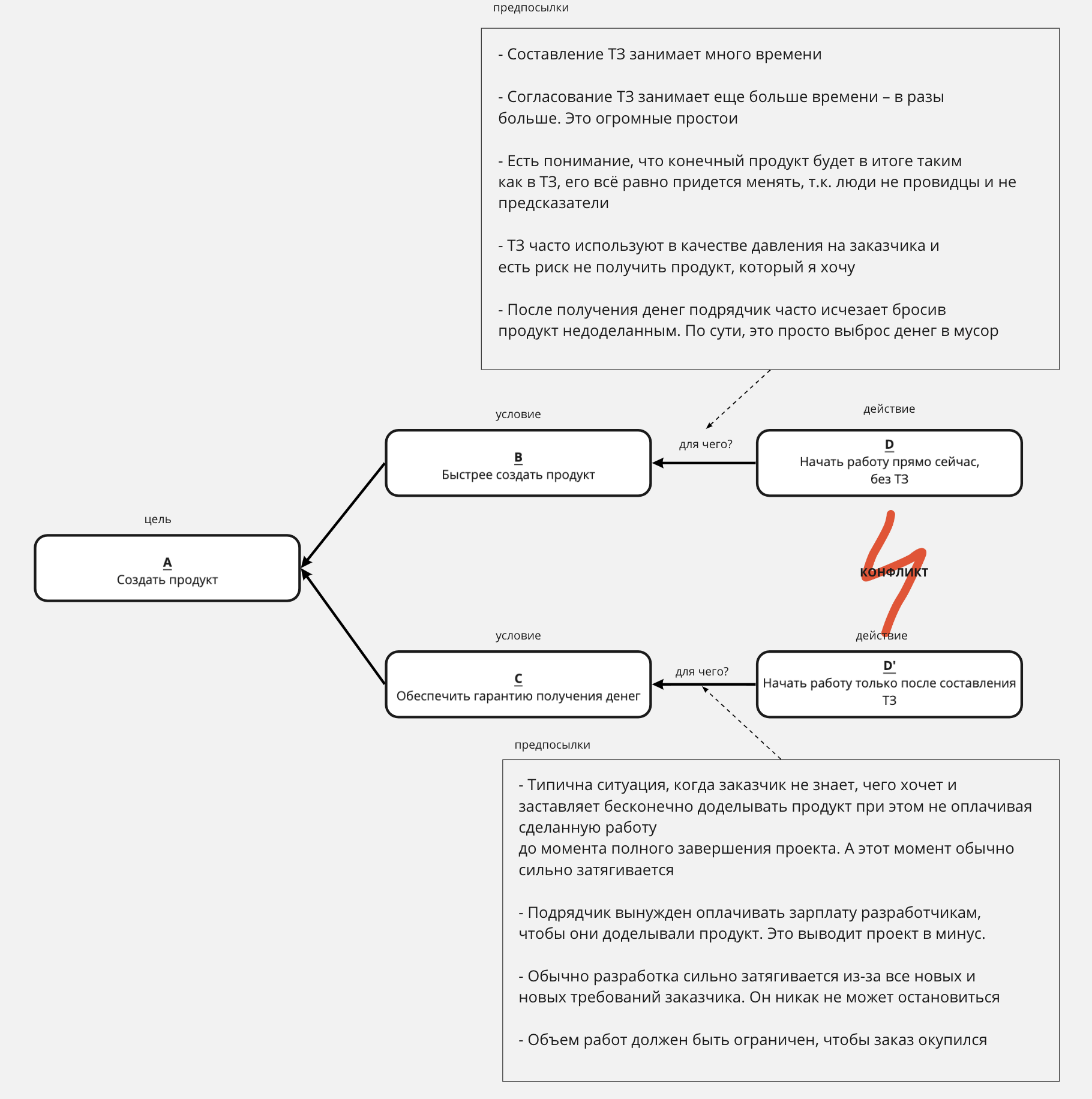
, . , ?
. , . () , , .
, , ( , ).
… – , . - .
, , , . , .
? , , .
– , /, .
, , , , .
, , - . - , .
, , .
-
, .
- – .
- , .. .
- , , , ..
( ), . , .
- ,
, .. .
- , . ,
, , . , .
– .
- , , , .
, . . , .. .
- , . .
. .
- - .
. , .
- ,
.
! ! !
, , . , .
( ) , / .
? , , , ?
.
() . ( Youtube) : «Really?!» (« ?!»)
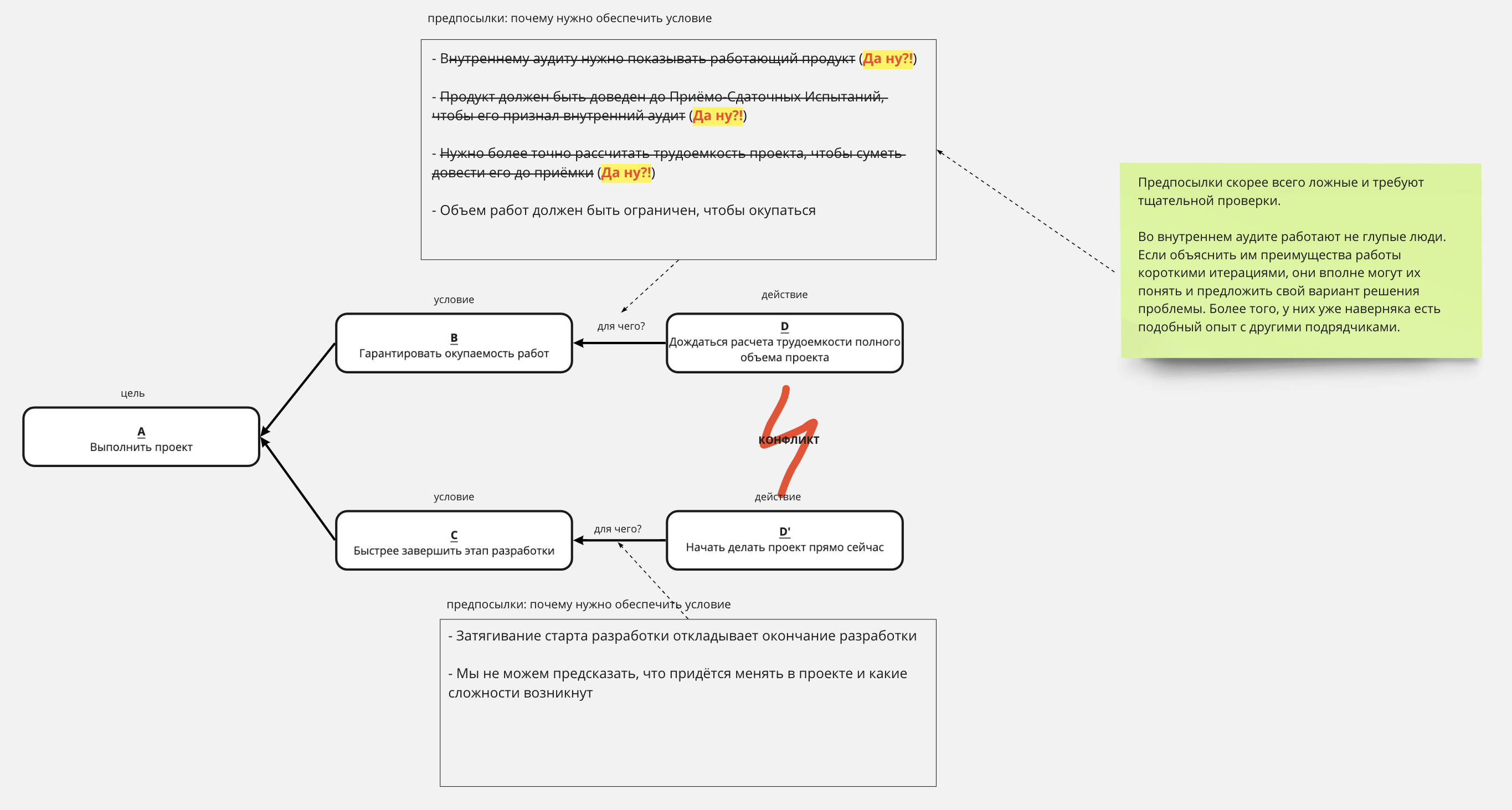
? ?! , - ? ?!
– , , ?
, . , , . .
, , , , , .
, , , . , ?..
– , .
. . , . , Scrum ( ) , .
.
, , .
, « » . .
.
P.S. , .
« ? .
, . , - , Oracle.
. , , , , , , .
, - , . : «, ».
: , , . , ( ).
, .. , . »